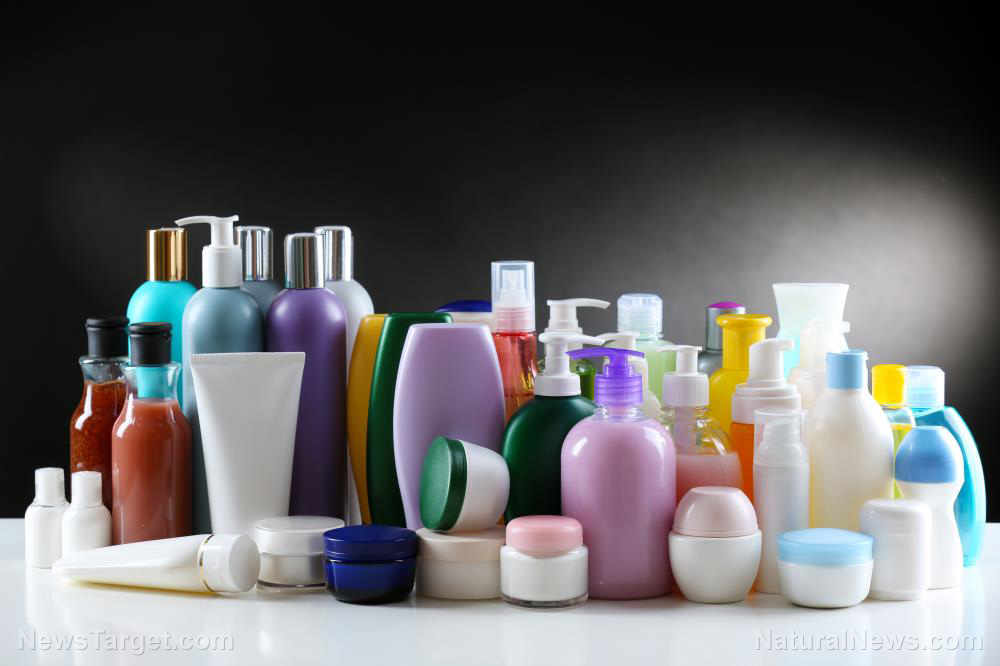
Hand soap may be one of those items you buy without thinking twice about the ingredients, just because soap is soap. But most store-bought soaps contain harsh ingredients that can harm your skin and overall health.
Keep your hands clean and your skin moisturized with this recipe for a DIY foaming hand soap that makes use of non-toxic, natural ingredients. (h/t to TheHomesteadingHippy.com)
Why make your own soap?
Common soaps contain different chemicals that can disrupt your hormones, cause allergies and increase your risk of reproductive issues and cancer.
Here are four dangerous chemicals that you can find in most store-bought soaps:
- Fragrance – This ingredient sounds vague but it's also very dangerous. When a soap has "fragrance" in the ingredients list, it could also contain cancer-causing chemicals like phthalates, which are used to make fragrances last longer. Constant exposure to fragrances can negatively impact the central nervous system and trigger allergies, asthma symptoms and migraines.
- Parabens – Parabens are estrogen mimickers. They are easily absorbed through the skin and end up in the bloodstream, where they are mistaken for estrogen. The body's reaction to the presence of these hormone disrupters can lead to a decrease in muscle mass, an increase in fat deposits, the early onset of puberty and reproductive difficulties in men and women.
- Sulfates – Sulfates are used to produce lather and bubbles in soap. Commonly used sulfates in soaps include SLS (sodium lauryl sulfate) and SLES (sodium laureth sulfate). Sulfates strip your skin of natural oils. These chemicals also act as irritants for those with sensitive skin or eczema.
- Triclosan – Triclosan is usually found in antibacterial soap. Research has found that bacteria exposed to triclosan can develop antimicrobial resistance.
Making foaming hand soap at home ensures that you can choose only non-toxic ingredients for your soap. You can also personalize fragrant hand soaps using your preferred essential oils.
You don't need to break the bank to make foaming hand soap. You only need a dispenser bottle and several ingredients you may already have at home.
DIY foaming hand soaps can also be given as thoughtful presents during the holidays. Reuse plastic soap dispenser bottles or glass bottles to cut down on your expenses while making foaming hand soap.
The recipe below uses essential oils with antibacterial properties. Some essential oils can also help moisturize your skin by locking in the skin’s natural oils. (Related: How to make DIY antibacterial hand sanitizer using non-toxic ingredients.)
DIY foaming hand soap recipe
Making your own foaming hand soap is easy. All you need is a glass or plastic dispenser bottle and the following ingredients:
Materials:
- 1 Tablespoon almond oil, olive oil or vitamin E oil
- 10 drops of your preferred essential oil (try using cinnamon, rose, vanilla or ylang-ylang essential oil)
- 10 drops tea tree oil (optional)
- 2.5 oz. Castile soap
- 10 oz. distilled water or water that has been boiled and then cooled off
- 1 to 3 teaspoons table salt (optional)
Note: The more salt you use, the thicker the foam will be. Don't use too much salt as it may affect the dispenser’s ability to dispense the soap.
Instructions:
- Dilute the salt in boiled water or distilled water. Use about three teaspoons so the soap will be foamy but won't block your bottle's dispensing system.
- Fill about 3/4 of the dispenser bottle with the distilled water.
- Add the Castile soap. The correct ratio is one part Castile soap to four parts water. Use good quality Castile soap if you want more foam.
- Add the base oil. Choose a good-quality base oil to make soap that can help moisturize your skin.
- Add 10 drops of your chosen essential oil.
- Add 10 drops of tea tree oil.
- Fill the bottle with the rest of the distilled water.
- Shake the mixture well to combine all the ingredients before using.
Troubleshooting common problems with foaming hand soap
- Where to find Castile soap – You can find Castile soap in the detergent aisle of your local store. Castile soap is a biodegradable, natural, non-toxic vegetable soap that is free of animal fats and synthetic ingredients.
- How to get the ratio right – As mentioned in the recipe above, the optimal ratio is one part Castile soap to four parts water. Using too much water will make the foam runny. Meanwhile, using too much soap can make it hard to dispense.
- Thin, watery soap – To make thicker foaming hand soap, add salt until it is as thick as you want it to be.
- Ingredients separate over time – It's normal for the ingredients in your hand soap to separate because the mixture doesn't contain any additives. Store-bought soaps contain harsh chemicals that prevent the separation of ingredients. If this happens, just shake the bottle before using.
- Dispenser bottles not working properly – It's best to use a high-quality glass dispenser bottle for your homemade foaming hand soap. But even the best quality dispensers will get clogged up sometimes. When making the soap, clean the bottle and pump thoroughly. Use warm water to break up blockages in the dispenser.
- Dispenser starts leaking soap – If the soap dispenser leaks even when it's not pumped, add about three tablespoons of water to help pump the soap out completely and stop the dispenser from leaking.
Make DIY foaming hand soap for your own use or as personalized gifts for loved ones. Use fragrant essential oils and natural ingredients that will also help moisturize your skin.
Visit Preparedness.news for other creative prepper projects you can try at home.
Sources include:
Please contact us for more information.





















